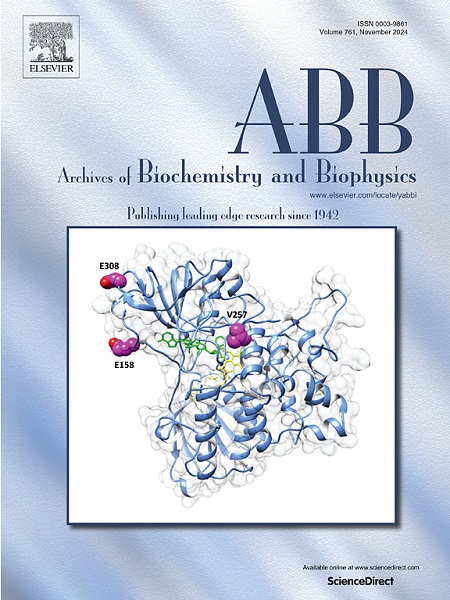Therapeutic potential of SMAD7 targeting miRNA in the pathogenesis of diabetic nephropathy
IF 3.8
3区 生物学
Q2 BIOCHEMISTRY & MOLECULAR BIOLOGY
引用次数: 0
Abstract
Diabetic nephropathy (DN) is a common complication of diabetes and a leading cause of end-stage renal disease, characterized by progressive kidney fibrosis and inflammation. The transforming growth factor-beta (TGF-β) signaling pathway plays a crucial role in the pathogenesis of diabetes nephropathy, and SMAD7 is a key negative regulator of this pathway. Recent studies have highlighted the involvement of miRNA in the progression of DN. Computational analysis identified 11 potential miRNAs such as miR-424, miR-195, miR-216a, miR-503, miR-15a-5p, miR-15b-5p, miR-665, miR-520h, miR16-5p, miR-21 and miR-32-5p which are predicted to target 3′UTR of SMAD7 mRNA. This review aims to explore the role of these miRNAs in the progression of DN. Notably, these miRNAs have shown therapeutic potential in mitigating fibrosis and inflammation by modulating SMAD7 expression in DN. Future directions can be to investigate the mechanistic pathways through which these miRNAs exert their effects, as well as optimizing delivery systems for effective clinical application. Targeting miRNAs that modulate SMAD7 expression represents a promising strategy for developing specific and effective therapies for diabetic nephropathy.

靶向miRNA的SMAD7在糖尿病肾病发病机制中的治疗潜力
糖尿病肾病(DN)是糖尿病的常见并发症,也是终末期肾脏疾病的主要原因,以进行性肾脏纤维化和炎症为特征。转化生长因子-β (TGF-β)信号通路在糖尿病肾病的发病过程中起着至关重要的作用,而SMAD7是该通路的关键负调控因子。最近的研究强调了miRNA参与DN的进展。计算分析确定了11种潜在的mirna,如miR-424、miR-195、miR-216a、miR-503、miR-15a-5p、miR-15b-5p、miR-665、miR-520h、miR16-5p、miR-21和miR-32-5p,预计它们可以靶向SMAD7 mRNA的3'UTR。本文旨在探讨这些mirna在DN进展中的作用。值得注意的是,这些mirna已显示出通过调节DN中SMAD7的表达来减轻纤维化和炎症的治疗潜力。未来的方向可以是研究这些mirna发挥其作用的机制途径,以及优化有效临床应用的递送系统。靶向调节SMAD7表达的mirna是开发糖尿病肾病特异性和有效治疗方法的一种有希望的策略。
本文章由计算机程序翻译,如有差异,请以英文原文为准。
求助全文
约1分钟内获得全文
求助全文
来源期刊

Archives of biochemistry and biophysics
生物-生化与分子生物学
CiteScore
7.40
自引率
0.00%
发文量
245
审稿时长
26 days
期刊介绍:
Archives of Biochemistry and Biophysics publishes quality original articles and reviews in the developing areas of biochemistry and biophysics.
Research Areas Include:
• Enzyme and protein structure, function, regulation. Folding, turnover, and post-translational processing
• Biological oxidations, free radical reactions, redox signaling, oxygenases, P450 reactions
• Signal transduction, receptors, membrane transport, intracellular signals. Cellular and integrated metabolism.
 求助内容:
求助内容: 应助结果提醒方式:
应助结果提醒方式:


